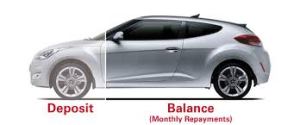Anyone running a company car will be painfully aware of their vehicle’s emissions. It has been this way since 2002, when the government switched the way it taxes this particular ‘benefit in kind’ (BIK) from a mileage-based system to a complicated calculation that takes into account the car’s CO2 emissions (essentially their fuel economy) and the list price.
It’s all part of the plan to get us running around in more eco-friendly cars. The amount of CO2 your car emits – expressed in grams per kilometre (g/km) – determines, in part, how much tax you must pay for running it.
This is how the sum works. The car’s official CO2 figure determines the tax banding, which is expressed as a percentage of the car’s list price. So a Mini Cooper emitting 127g/km sits in percentage band 16 (bands currently run from 5 to 35%). That 16% of the Cooper’s £14,900 list price is further modified by your own income- tax band, whether that’s 20, 40 or 50%. You now have your annual company car bill.
However, thanks to a tax escalator that adjusts the bandings yearly, that bill can go up every year. And a new escalator – whereby the tax due on higher-emitting cars will rise by 1 percentage point in 2013/14 and then again in 2014/15 – means many company car drivers will see a steady increase to their costs and lead more of them to ask, is it worth it?
Increasingly, companies are offering cash alternatives. Companies realise car leases are still an important tool in recruiting and retaining the best employees but they also don’t want the hassle of running a car fleet.
Let’s look at a typical wavering company car driver, we’ll probe their monthly finances to ask a broader question applicable to all employees given the option: is it worth taking the cash to source my own car?
As an example, let’s say you are entitled to a BMW 318d saloon, which is worth around £27,000. Many firms offer a fairly wide choice of manufacturers, but drivers are restricted to lower-powered diesel models because they’re the best on CO2, despite a surcharge imposed by the government that penalises diesel cars over petrol-fuelled models.
Car manufacturers have responded to the regulations by offering special business-specific models with very good CO2 figures, but the choice can be restrictive.
Until April, let’s say you paid £100 a month in tax for your Vauxhall Insignia diesel. It’s very good on CO2 at 112g/km but, following the introduction of the new tougher tax bandings, your tax bill has since climbed to £125 a month.
One way to save money is to choose a car that really cuts CO2 and take advantage of the new, very low-emission tax bandings. These bandings are expressed as a percentage of list price. For example cars emitting under 50g/km of CO2 are taxed at just 5% of list price, compared with 17% for the Vauxhall.
So if you went for a more eco-friendly Toyota Prius plug-in hybrid, you would pay just £55 a month, despite this high-tech car being tagged with a £33,190 list price.
Your company could boost the amount it’ll offer so employees can afford more expensive eco-tech cars, something that is happening more often as companies get tax breaks if they attract more low-emissions cars to their fleets.
So what about taking the cash allowance instead? The first thing to be aware of is this will be taxed – let’s say, for example, at 40%, so your £6,422 allowance becomes £3,854.
However, one big perk for company car drivers who take the allowance is the mileage rates. If a company offers the full 45p and the employee drives significant business miles in a car that uses very little fuel, this can really help the sums add up on a private car. The only drawback is mileage limits on personal finance schemes that require you to hand the car back, such as leasing.
Doing the sums on the £3,854 extra a year means you would get £321 a month to play with. Adding another £40 a month claimed back from the comparatively low 200 business miles you might do a month, that’s £361. With that figure in mind, let’s go car shopping!










